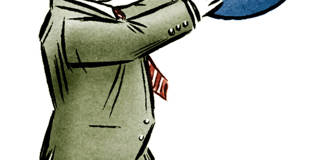Capital Shrugged
Capitalism’s greatest strength has been its resiliency – its ability to survive the throes and challenges of crises and business cycles to fuel innovation and economic growth. Today, however, more than four years into a credit crisis, this legacy is being called into question as never before.
LOS ANGELES – Capitalism’s greatest strength has been its resiliency – its ability to survive the throes and challenges of crises and business cycles to fuel innovation and economic growth. Today, however, more than four years into a credit crisis, a conspicuous enigma calls this legacy into question.
Despite recent hopes of recovery in the US, including an inventory catch-up in the fourth quarter of 2011, real US GDP growth has remained persistently below trend. Moreover, although seasonally adjusted January employment data have brought the unemployment rate down to 8.3% (while total jobs were actually lost in January), the more realistic rate of “underemployment” remains over 15% and the labor-force participation rate is at a record 30-year low. And the US is clearly not alone in its malaise, with the eurozone fighting a far more urgent sovereign-debt crisis.
So, why is this time different? The answer lies in Ayn Rand’s rhetorical invocation of despair in her 1957 epic Atlas Shrugged: “Who is John Galt?” Simply put, when the state seizes the incentives and drivers of capital investment, owners of capital go on strike.



LOS ANGELES – Capitalism’s greatest strength has been its resiliency – its ability to survive the throes and challenges of crises and business cycles to fuel innovation and economic growth. Today, however, more than four years into a credit crisis, a conspicuous enigma calls this legacy into question.
Despite recent hopes of recovery in the US, including an inventory catch-up in the fourth quarter of 2011, real US GDP growth has remained persistently below trend. Moreover, although seasonally adjusted January employment data have brought the unemployment rate down to 8.3% (while total jobs were actually lost in January), the more realistic rate of “underemployment” remains over 15% and the labor-force participation rate is at a record 30-year low. And the US is clearly not alone in its malaise, with the eurozone fighting a far more urgent sovereign-debt crisis.
So, why is this time different? The answer lies in Ayn Rand’s rhetorical invocation of despair in her 1957 epic Atlas Shrugged: “Who is John Galt?” Simply put, when the state seizes the incentives and drivers of capital investment, owners of capital go on strike.